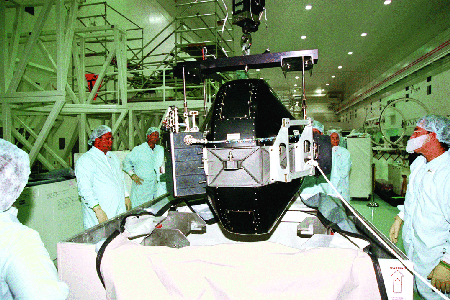TIM FURNISS / LONDON
Thrusters from Russian segment of space station may be needed for attitude control as bearing assembly fails
One of the four 350kg (770lb) control moment gyros (CMGs) aboard the International Space Station (ISS) has failed and a replacement cannot be launched until next year.
A bearing assembly in the CMG 1, which is mounted on the station's Z1 truss, failed on 8 June as the newly arrived ISS crew was unloading equipment from the Space Shuttle Endeavour STS 111 and preparing for a spacewalk the following day.
The CMGs provide attitude control for the ISS and without them engineers would have to rely on thrusters on the Russian segment of the station to maintain proper attitude control.
The three remaining CMGs are working, with their gyro wheels spinning normally at 6,600rpm in different planes as commanded by the ISS onboard computers to maintain the desired attitude, without using precious thruster propellant.
However, NASA considers the CMG 1 problem "a serious complication for the long-term space station operations". The ISS can work using two GMGs, but that is the worst-case scenario.
"Losing a CMG is a big deal as it is a major component," says flight director Paul Hill. If another unit fails, attitude will not be able to be maintained fully by the two remaining CMGs and the Russian thrusters will have to start using high propellant loads.
The L-3 Communications-built gyros and associated assemblies, together weighing 450kg, are mounted inside the truss that extends upwards from the Unity node's zenit port. After criticising the Russian Mir space station for its operational problems, NASA is discovering that operating a space station involves problems and part of the success of operations is the troubleshooting that the Russians were so good at.
The Space Shuttle Endeavour docked with the ISS on 8 June on its STS 111 mission to deliver a new crew and cargo, including the European Space Agency's Microgravity Science Glovebox, and to return the fourth expedition crew after a 190 day-plus stay.
Three planned spacewalks began on 9 June, to continue work on the Mobile Base System and repair the Canadarm 2 manipulator system. The work will complete the Canadian Mobile Servicing System, allowing the mechanical arm to move from the US laboratory on the ISS along the truss to work sites.

Source: Flight International



















